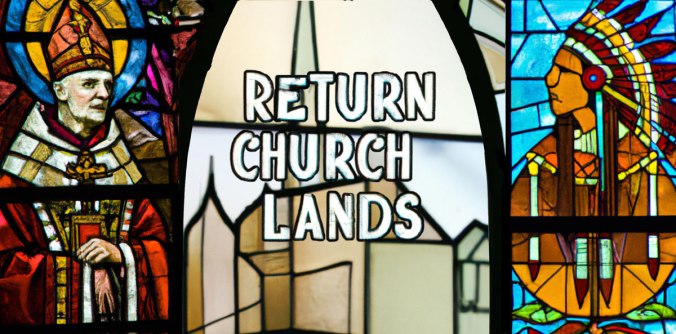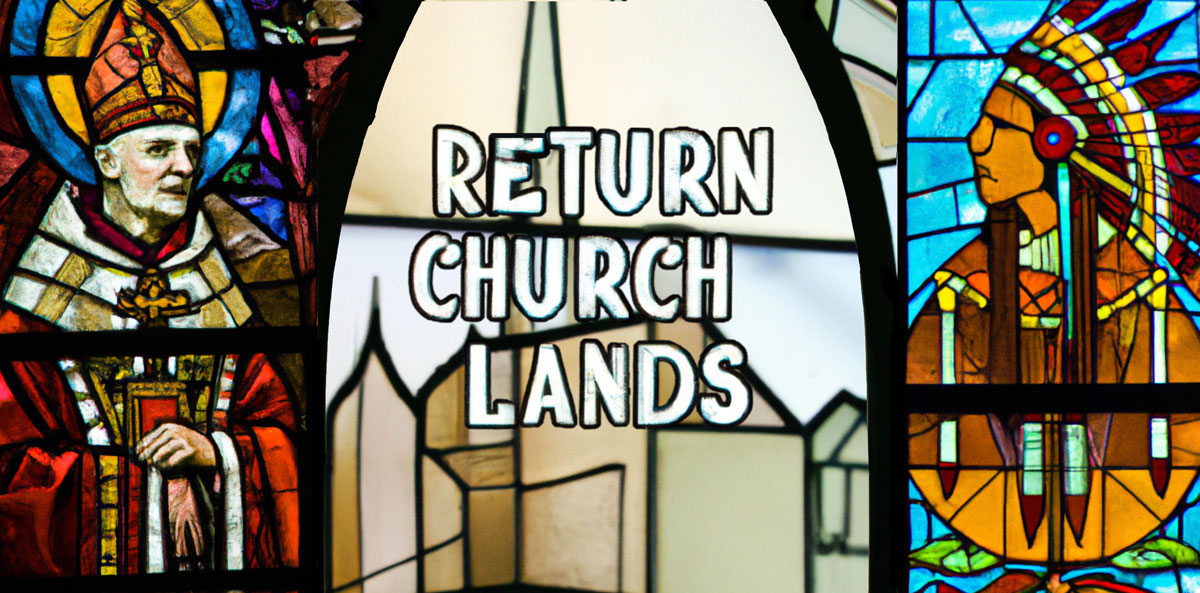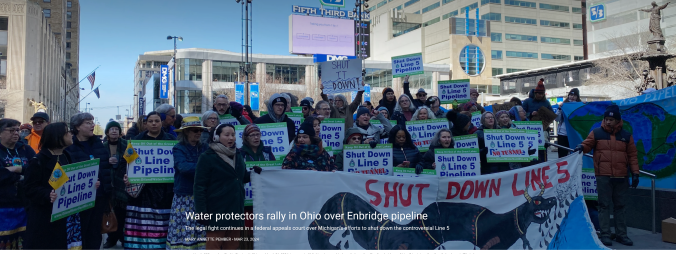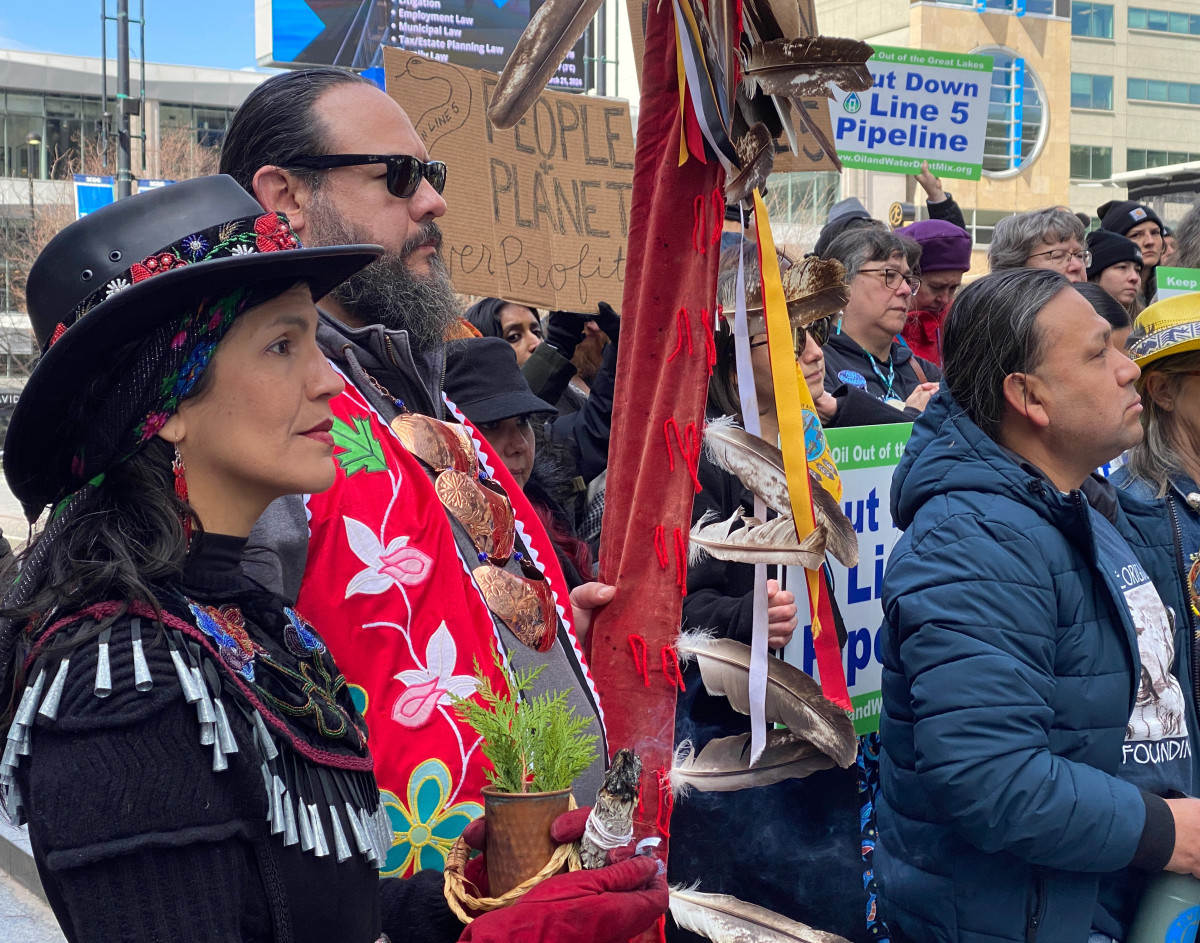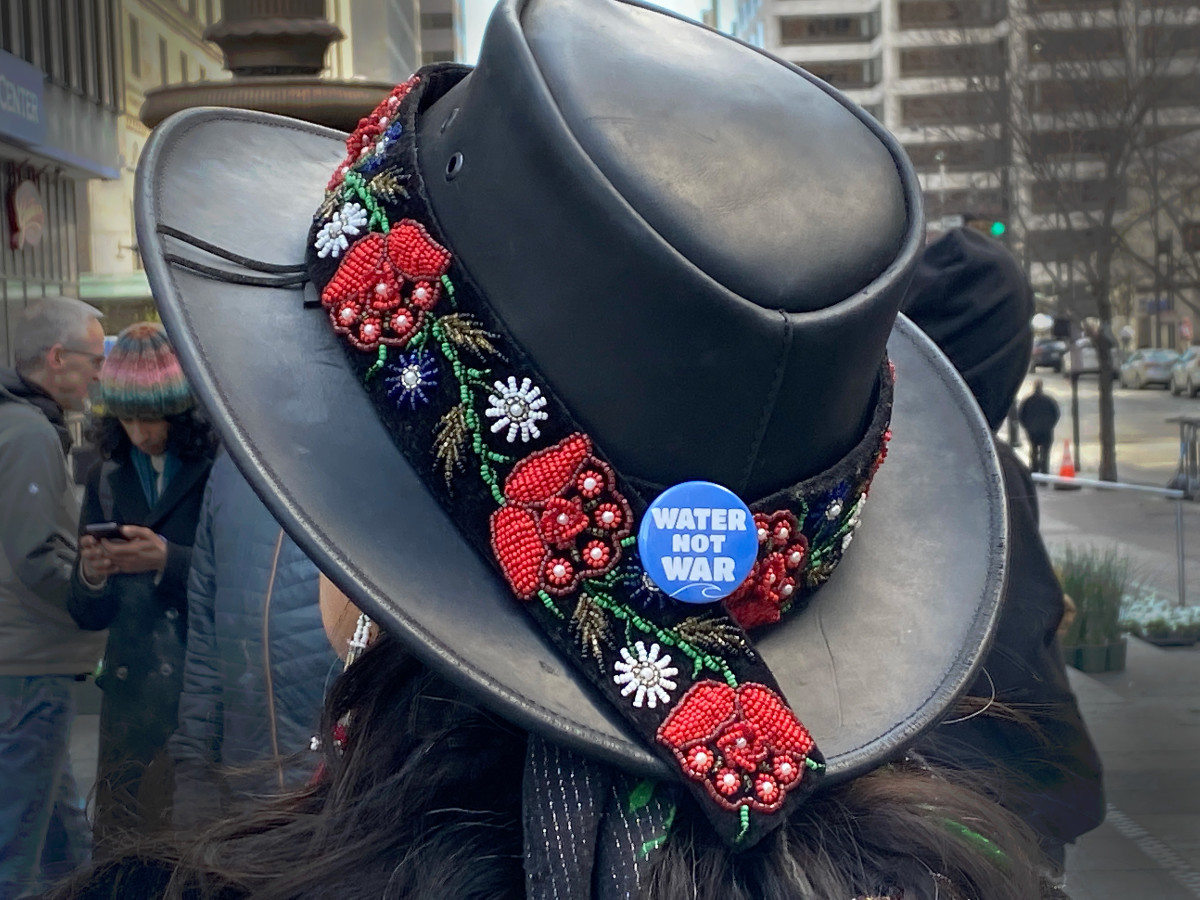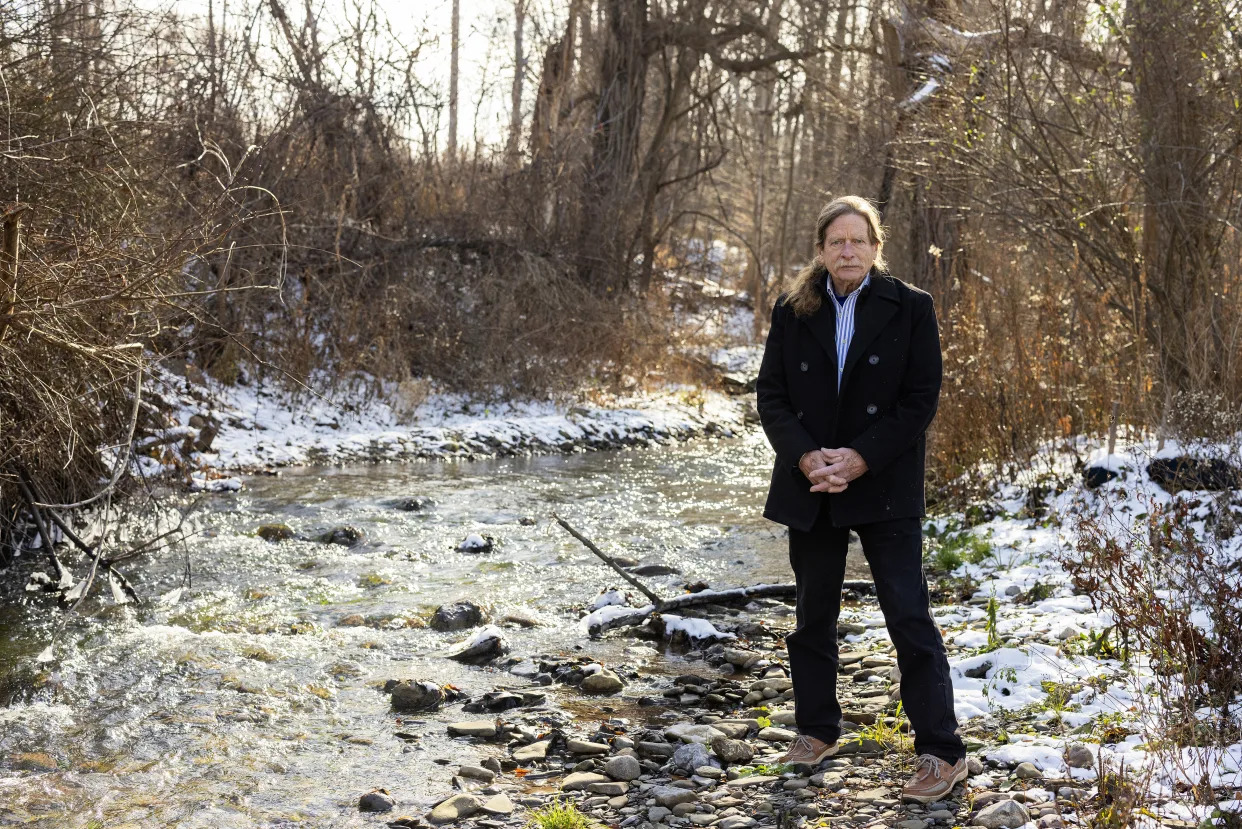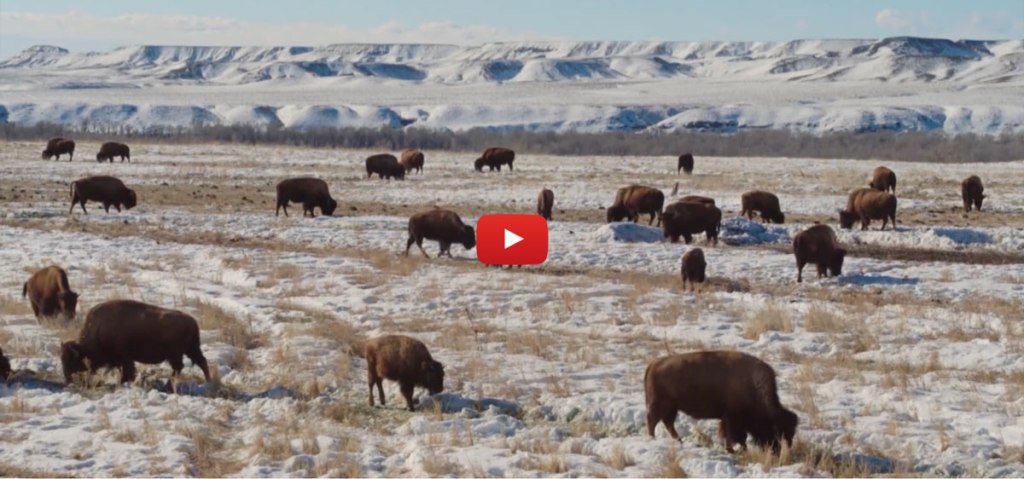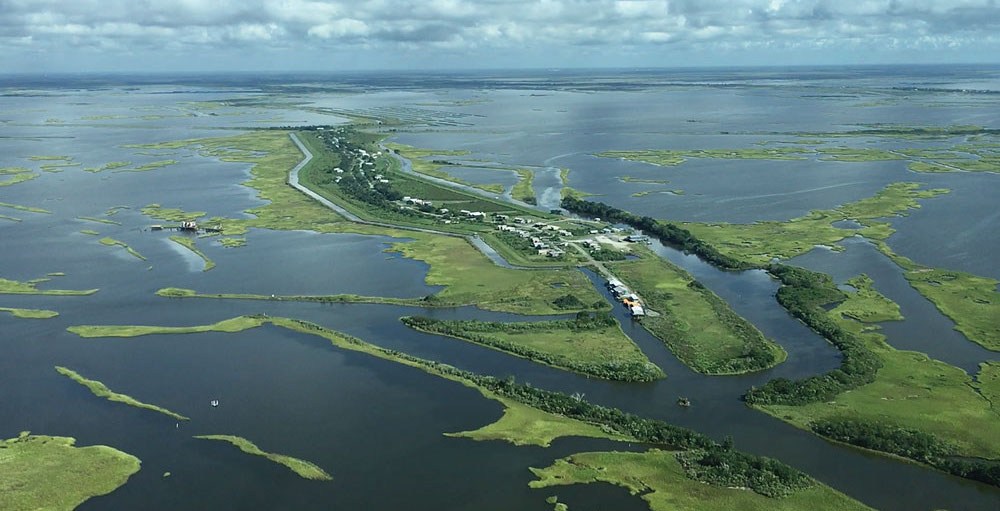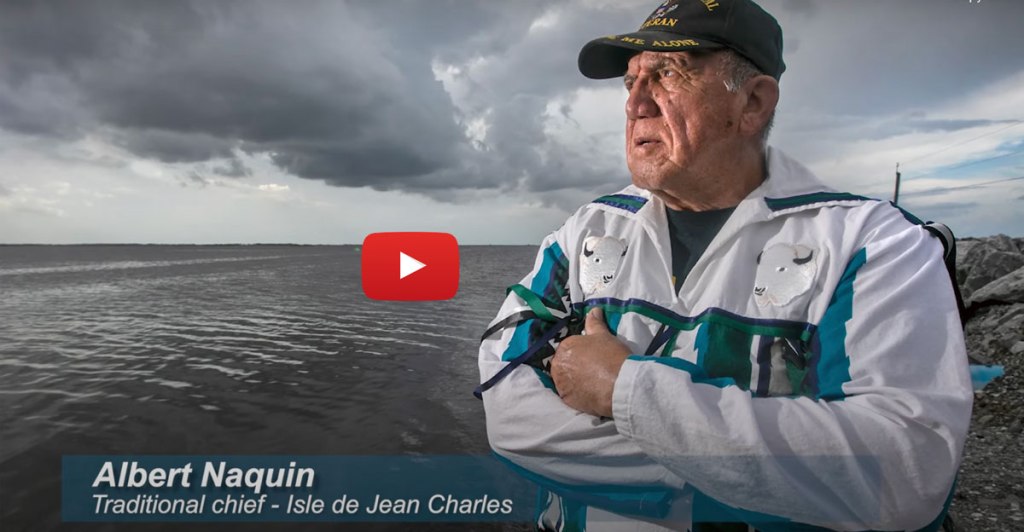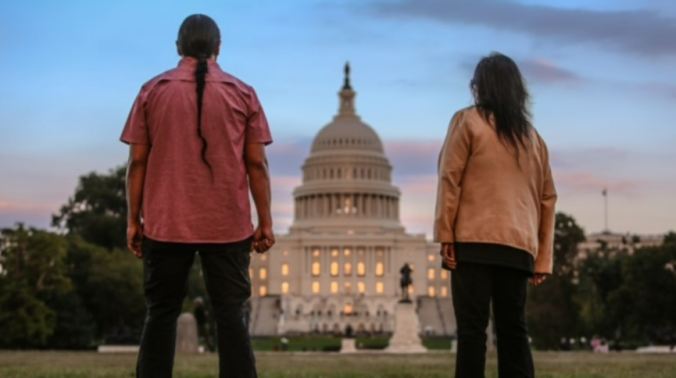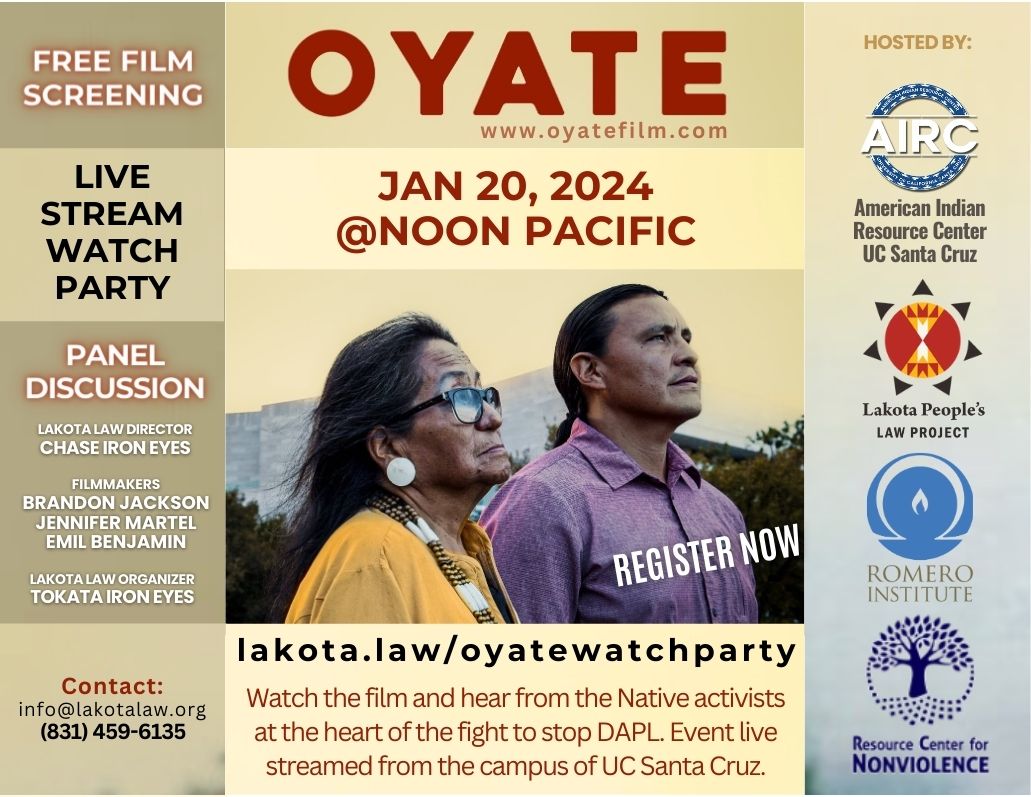A pro-Palestinian demonstration encampment is seen at the Columbia University, Friday, April 26, 2024, in New York. (AP, Yuki Iwamura)
A wave of highly charged student protests sweeping college campuses around the nation this week include Indigenous students protesting Israel’s killing of Palestinians.
Kianna Pete, Diné and a Columbia University graduate student from New Mexico, said she and other Native American peers stand in solidarity with Palestinians.
She has taken part in a protest encampment at Columbia – which ignited the fast-spreading student movement – in New York City since last week when 100 students were arrested. Student protesters’ ranks have swollen nationally with reportedly mostly peaceful protests.

Kianna Pete (Courtesy photo)
“All of those things that we’ve experienced as Indigenous peoples here on Turtle Island, the same thing is happening in Palestine and has been happening in Palestine for the past 75 years,” Pete said. “But through this movement, I’ve begun to learn a lot more about it and to offer support.”
Pete, who’s studying politics and education, sees parallels between American colonization and what she considers to be inhumane acts of war by Israel against everyday Palestinians.
“Similar to settler-colonial projects we’ve experienced here in the United States as Indigenous peoples – that being the justification of land grabs and that is done through stealing Indigenous land and displacing them, (we are) being super highly surveillanced,” Pete said.
She said police are using drones to monitor the student encampment.

A student pro-Palestine encampment at Columbia University in New York City is shown here. (Photo courtesy of Kianna Pete)
Like students across the country, Columbia’s student protesters are demanding that their administration stop doing business with companies linked to Israel and are also calling on the U.S. government to stop providing military aid to Israel.
“I’ve been in a stage of solidarity with our pro-Palestinian movement here on campus,” Pete said. “And that encompasses a huge plethora of different organizations, different people inside and outside of the community … supporting the Columbia University’s divestment from Israeli apartheid.”
According to Gaza health officials, at least 34,000 Palestinians have been killed in the ongoing war between Palestine and Israel since the Hamas resistance group retaliated against Israel on Oct. 7, 2023, and killed about 1,200 people and took more than 200 hostages. As of Nov. 2023, Israel help nearly 7,000 Palestinians, many of them children, according to the Israeli human rights organization HaMoked.
The United Nations reports that two million Gazans are trying to survive near-famine conditions. At least two-thirds of the 34,000 killed reportedly are women and children.
Columbia alumni have donated money to and provided on-the-ground necessities like food, water and shelter to student protesters.
Indigenous people see many similarities between the U.S. government’s seizure of Native lands and murder of of Native people and Israel’s treatment of Palestinians, said Nick Tilsen, Lakota and president of the NDN Collective, a Rapid City, S.D.-based nonprofit.
NDN Collective has been documenting the student protesters’ efforts and supporting them.

Nick Tilsen, NDN Collective president (Photo by Arlo Iron Cloud courtesy of NDN Collective)
“We have been in deep solidarity with the Palestinian Liberation over the past few years,” said Tilsen. “One of the real important reasons why we as an organization supports … the movement for cease-fire and for Palestinian liberation is specifically because if you look at the amount of resources that the United States of America, which is a settler-colonial government, is sending over to Israel, it’s in the billions. Before October 7, it was annually about $3.4 billion a year.”
The NDN Collective is dedicated to building Indigenous power, he said. It invests in the self-determination of Indigenous people across Turtle Island, as well as in Canada, Mexico, American Samoa, Guam and Puerto Rico. They focus on grant-making, loans, community development, advocacy, policy development and public relations support. https://www.youtube-nocookie.com/embed/3tZkdbfvVqI
Although not directly involved in the current University of Minnesota student protests, NDN Collective sent staff to document the protests. But Tilsen said while his organization supports the protesters, it’s not NDN Collective’s role to lead the student movement.
“And so the work that they have done to extract our resources from our lands and to impose violence and settler-colonialism on a whole other people in Gaza is not something that we stand for,” he said. “We’re part of the ant-militarization movement. We do not believe that military violence is the solution.
“And we do not believe that U.S. imperialism is the solution.”
In the face of what protesters describe as overly aggressive police response to the peaceful protests, students have persevered – even as end-of-semester final exams and spring graduations loom. At the University of Southern California, main-stage graduation ceremonies were canceled after authorities cited safety concerns due to protests.
Misinformation in the mainstream media has led many to believe the protests are not peaceful, Pete said.
“There’s a lot of rhetoric saying that these are not peaceful, or that these protests are funded by terrorists,” she added. “A lot of these different stories aren’t capturing what exactly is happening in these different encampments.”
She suggested the public pay attention to independent news sources to get the real stories of what’s happening in Gaza.
Among the news outlets from which students gather their information are the Columbia Spectator, the student newspaper, and the Columbia University public radio station.
“So (we’re) making sure we’re getting verified information that is from people on the front lines, that is from independent journalists who have been at these encampments from the very beginning, listening to students, organizations, newspapers and outlets who have been covering this since October, when many of the protests started.”
Pete remains adamant that Indigenous people stand up for the vulnerable people of Gaza.
“We are protesting for the right to life, the right for Palestinian people to live and to exist,” she said. “Right now, there are no more universities left in Gaza. We have an extreme privilege to be able to protest and to use our voice for those who don’t have them right now.”

Columbia University students protest the war in Gaza. (Photo courtesy of Kianna Pete)



